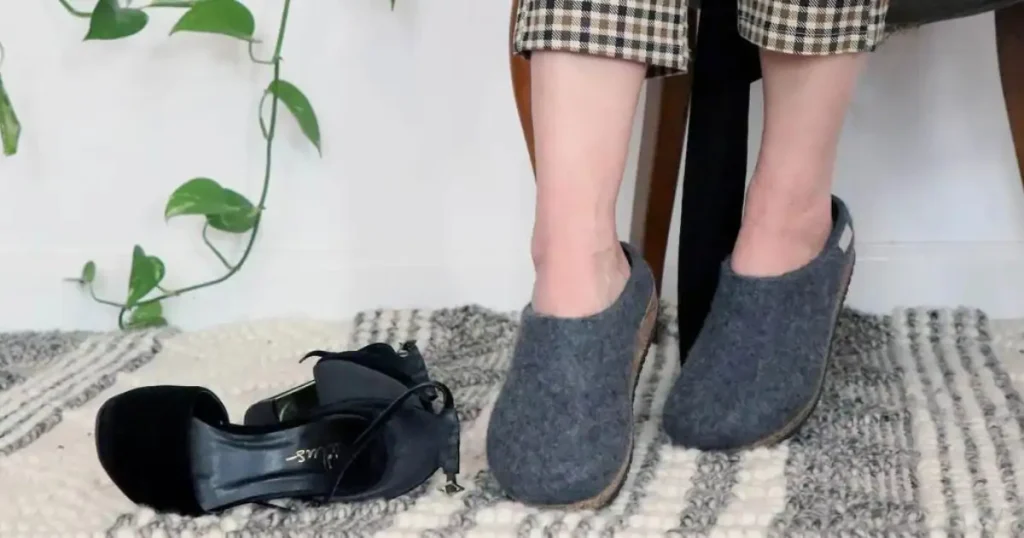Are you familiar with the frustrating sensation of having water trapped in your ear after a refreshing swim or a relaxing bath? It’s a common annoyance that can lead to discomfort, impaired hearing, and even infection if left unaddressed. But fear not! Following the effective methods to get water out of your ear while ensuring your ear’s health and safety.
Table of Contents
Understanding the Ear’s Design
The ear has a complex structure, including the outer ear, middle ear, and inner ear. The outer ear is designed to capture sound waves and also serves as a gateway for foreign elements, such as water. When water becomes trapped, it can create a perfect environment for bacteria and fungi to thrive.
Common Scenarios Leading to Trapped Water
1. Swimming Mishaps
One of the most common scenarios is water getting stuck in the ear while swimming. The force of diving or swimming can push water into the ear canal, where it may become lodged.
2. Inadequate Ear Cleaning
A wax buildup in the ear can prevent water from naturally draining out, increasing the likelihood of it becoming trapped. Regular and proper ear cleaning is essential to prevent such issues.
The Annoying Aftermath
The feeling of water in the ear is not only annoying but can also lead to temporary hearing impairment and discomfort. Additionally, it creates a breeding ground for bacteria, potentially resulting in swimmer’s ear—an infection of the outer ear canal.
The Step-by-Step Guide to Clearing Trapped Water
1. Tilt and Hop
One of the simplest methods involves tilting your head to the side and hopping on one foot. This motion can help the water drain out naturally. Imagine this as a dance move to shake off the unwanted ear guest!
2. Gravity-Assisted Drainage
Lie down on your side with the affected ear facing down. Gravity will encourage the water to flow out. You can also try using a warm compress on the outer ear to help the process.
3. Create a Vacuum
Gently press the palm of your hand against the ear and then quickly remove it, creating a vacuum that might draw the water out. Think of it as giving your ear a mini suction massage.
4. Alcohol and Vinegar Solution
A mixture of equal parts rubbing alcohol and white vinegar can help evaporate the trapped water. Tilt your head to the side, instill a few drops, and wait for a minute before tilting back to let the solution and water drain out.
5. Use a Blow Dryer
Set your hairdryer to the lowest heat setting and hold it about a foot away from your ear. The warm air can help evaporate the trapped water. Be cautious not to use high heat to prevent injury.
6. Over-the-Counter Drops
Several over-the-counter ear drops are designed to break down earwax and facilitate water drainage. These drops can be an effective solution, following the product instructions carefully.
7. Professional Assistance
If all else fails or if you experience pain, it’s crucial to seek professional help. An ear specialist or an ENT (Ear, Nose, and Throat) doctor can provide a more thorough examination and address any underlying issues.
Natural Remedies for Ear Health
Beyond the methods to remove trapped water, there are several natural remedies to maintain overall ear health. Incorporating garlic oil, known for its antimicrobial properties, can help prevent ear infections.
Applying a few drops of warm garlic oil can soothe the ear and reduce the risk of bacterial growth. Another effective remedy is tea tree oil, which can be diluted and used to keep the ear canal clean and healthy. These natural solutions provide a gentle and effective way to care for your ears.
The Importance of Preventive Measures
1. Earplugs for Swimming
Investing in high-quality earplugs for swimming is a proactive measure to prevent water from entering your ears during aquatic activities. They come in various styles, including custom-molded options for a perfect fit.
2. Regular Ear Cleaning
Maintaining good ear hygiene is paramount. Regularly clean your ears to prevent wax buildup and reduce the risk of water becoming trapped. Avoid using cotton swabs, as they can push wax deeper into the ear canal.
Common Myths About Ear Care
There are many misconceptions about ear care that can lead to ineffective or harmful practices. One common myth is that earwax should be removed frequently, when in fact, earwax plays a crucial role in protecting the ear canal from dust and bacteria.
Another myth is that ear candling is a safe way to remove earwax, despite evidence that it can cause burns and other injuries. Understanding these myths helps in adopting safe and effective ear care habits, ensuring long-term ear health.
Tips for Choosing Ear Care Products
Selecting the right ear care products can make a significant difference in maintaining ear health. When choosing ear drops, look for those with natural ingredients and avoid products with harsh chemicals. For earplugs, prioritize those made from hypoallergenic materials to avoid skin irritation.
Additionally, consider products that come with clear usage instructions and are backed by positive reviews. These tips can guide you in making informed decisions, ensuring that the products you choose contribute to your ear’s well-being.
Product Spotlight: Aqua seal Ear Plugs
When it comes to preventing water from entering your ears during swimming, Aqua seal Ear Plugs stand out as a reliable and effective solution. These specially designed earplugs create a secure seal, keeping water out while allowing you to enjoy your aquatic activities without worry.
Aqua seal Ear Plugs are crafted from high-quality, hypoallergenic materials, ensuring comfort during extended wear. The custom-molded design provides a snug fit for every user, effectively preventing water from entering the ear canal. Whether you’re a professional swimmer or someone who enjoys a leisurely dip, Aqua seal Ear Plugs offer a reliable defense against trapped water and potential ear infections.
Why Choose Aqua seal Ear Plugs?
Custom-Molded Comfort: The earplugs are designed to mold perfectly to the unique shape of your ear, ensuring a comfortable and secure fit.
Hypoallergenic Materials: Crafted from hypoallergenic materials, Aqua seal Ear Plugs are safe for all users, even those with sensitive skin.
Waterproof Seal: The specialized design creates a waterproof seal, effectively keeping water out and preventing the annoyance of trapped water in your ears.
Durable and Reusable: Aqua seal Ear Plugs are built to last, providing long-term protection. They are also reusable, making them an eco-friendly choice.
Perfect for All Ages: Whether you’re an adult or a child, Aqua seal Ear Plugs are available in various sizes to accommodate users of all ages.
Say goodbye to the inconvenience of trapped water in your ears and embrace the freedom to enjoy aquatic activities without worry. With Aqua seal Ear Plugs, you can confidently dive into the water, knowing your ears are well-protected.
Conclusion
Getting water out of your ear is a common predicament, but it’s essential to address it promptly to prevent discomfort and potential infections. From simple at-home remedies to preventive measures and innovative products like Aqua seal Ear Plugs, there are various solutions to choose from.
Remember, each ear is unique, and what works for one person may not work for another. If you find yourself struggling to get water out of your ear or experiencing persistent discomfort, don’t hesitate to seek professional medical advice. Your ears deserve the best care, so you can continue enjoying the sounds of life without interruption.
Frequently Asked Questions (FAQs)
1. How Long Can Water Stay Trapped in the Ear?
The duration water stays trapped in the ear can vary. In most cases, it should naturally drain out within a few hours. However, if the sensation persists for more than 48 hours or is accompanied by pain, it’s advisable to seek medical attention to prevent potential complications.
2. Are Cotton Swabs Safe for Cleaning Ears?
Cotton swabs are not recommended for ear cleaning, as they can push wax deeper into the ear canal and contribute to blockages. Instead, consider using over-the-counter drops or consult with a healthcare professional for safe ear cleaning methods.
3. Can I Use Home Remedies to Get Water Out of My Ear?
Yes, several home remedies can help, such as tilting your head, using warm compresses, or a mixture of rubbing alcohol and white vinegar. However, if these methods are ineffective or if you experience pain, it’s essential to consult a healthcare professional.
4. How Do I Choose the Right Size of Earplugs for Swimming?
Selecting the right size of earplugs is crucial for effectiveness and comfort. Many earplugs, including Aquaseal Ear Plugs, offer different size options. Choose a size that creates a snug but not tight fit to ensure proper sealing without causing discomfort.
5. Can Using Earplugs Cause Ear Infections?
When used correctly, high-quality earplugs, such as Aqua seal Ear Plugs, can significantly reduce the risk of ear infections by preventing water from entering the ear canal. It’s essential to follow proper hygiene practices, including regular cleaning of earplugs, to ensure their effectiveness and safety.



